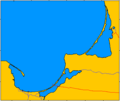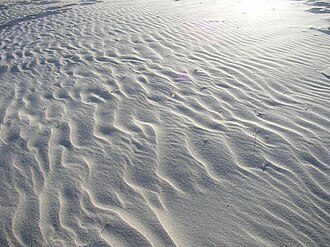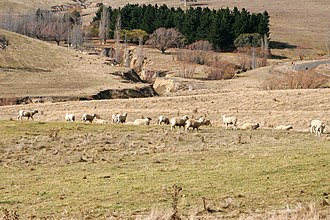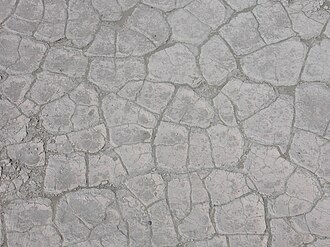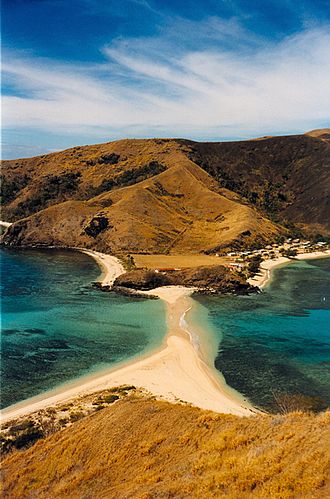AY Honors/Geology/Answer Key/es
| Geología | ||
|---|---|---|
| Asociación General
|
Destreza: 1 Año de introducción: 1975 |
|
Requisitos
|
La especialidad de Geología es un componente de la Maestría Conservación. |
1
1a
1b
1c
1d
1e
1f
1g
1h
1i
1j
2
2a
2b
2c
2d
2e
3
First, let's define what these three types of rock are:
- Sedimentary
- Sedimentary rock is formed when sediments carried by wind or water settle and turn to stone.
- Metamorphic
- Metamorphic rock is formed when another type of rock is transformed by great heat and pressure.
- Igneous
- Igneous rock is formed when lava cools and solidifies.
3a
Ígnea
3b
Sedimentaria
3c
Sedimentaria
3d
Metamórfica
3e
Sedimentaria
3f
Metamórfica
3g
Ígnea
3h
Sedimentaria
3i
Ígnea
3j
Metamórfica
4
4a
The size of a particle that a stream can transport depends on the stream's speed as well as the size and density of the particle. In general, the faster the current, the larger the particle that can be transported. As a stream slows, it drops the largest particles first. As it slows more, it continues to drop finer and finer particles. When the current stops, all sediments are deposited. In the diagram note how the sediment at the top is much finer than the sediment at the bottom. This natural sorting mechanism occurs whenever sediments are deposited, and can be used to detect boundaries between sedimentation events. A normal graded sediment indicates that the sediment layer has not been overturned since it was deposited, while an inverted bed (finer particles at the bottom, larger ones on top) indicates that the sedimentation layer was overturned after its deposition.
4b
In this photo, the wind was blowing from left to right. The left sides of the ripples have gentler slopes, while the right sides have steeper slopes. As the wind breaks over the top of the ripples, it forms eddy currents (circulating wind) which make the lee side steeper than the windward side.
4c
A gully is a landform created by running water eroding sharply into soil, typically on a hillside. Gullies resemble large ditches or small valleys, but are meters to tens of meters in depth and width.
4d
4e
A 'soil profile' is a cross section through the soil which reveals its layers.

- O) Organic matter: Litter layer of plant residues in relatively undecomposed form.
- A) Surface soil: Layer of mineral soil with most organic matter accumulation and soil life. This layer eluviates (is depleted of) iron, clay, aluminum, organic compounds, and other soluble constituents. When eluviation is pronounced, a lighter colored "E" subsurface soil horizon is apparent at the base of the "A" horizon.
- B) Subsoil: Layer of alteration below an "E" or "A" horizon. This layer accumulates iron, clay, aluminum and organic compounds, a process referred to as illuviation.
- C) Substratum: Layer of unconsolidated soil parent material. This layer may accumulate the more soluble compounds that bypass the "B" layer.
4f
Referencias
- Categoría: Tiene imagen de insignia
- Adventist Youth Honors Answer Book/Honors/es
- Adventist Youth Honors Answer Book/es
- Adventist Youth Honors Answer Book/Skill Level 1/es
- Categoría: Libro de respuestas de especialidades JA/Especialidades introducidas en 1975
- Adventist Youth Honors Answer Book/General Conference/es
- Adventist Youth Honors Answer Book/Nature/es
- Adventist Youth Honors Answer Book/Stage 0/es
- Adventist Youth Honors Answer Book/Conservation Master Award/es


